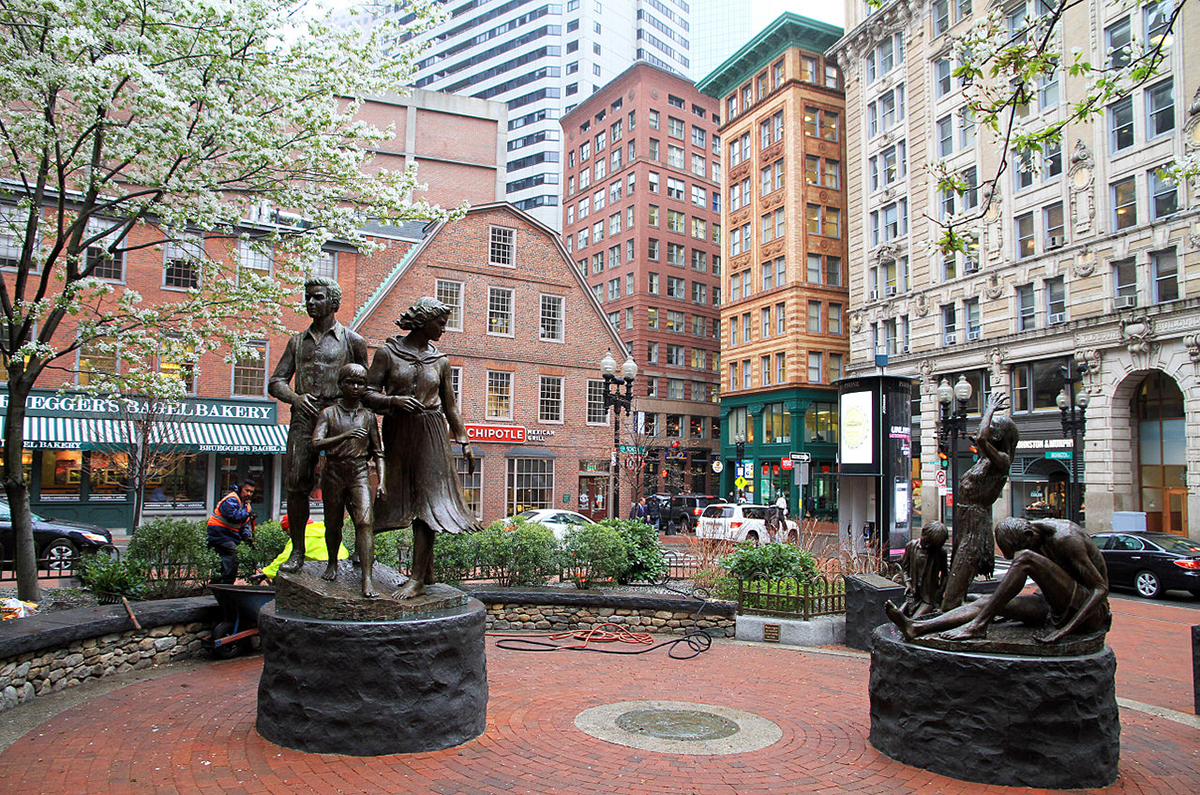Throwback Thursday: When Bostonians Met to Discuss the Irish Famine

Irish Famine Memorial photo via Wikimedia/Creative Commons
Before Boston was known for its Irish, the Irish were a concern of the city.
One hundred and sixty-nine years ago, citizens grew alarmed at news of the Irish Famine. After months of hearing horrific accounts of starvation in Ireland, Bostonians organized to do something about it. A public meeting was held at Faneuil Hall on February 18, 1847 in order to figure out how Boston could help the starving country.
Tens of thousands of people were suffering from malnutrition and disease because of a mold that had been destroying Ireland’s potato plants for almost two years. Many Irish Catholic immigrant communities in the area had already been sending donations in the hopes that the next year’s crop would solve the problem. But news eventually reached Boston that the famine was far from over, and the citizens at Faneuil Hall resolved to do more.
A force called the Boston Relief Committee, lead by Major Josiah Qunicy Jr., was formed from the meeting. The Committee raised more than $150,000 (almost $400,000 today) from donors across the country, and set out to petition Congress for permission to send supplies to Ireland on a naval vessel.
The proposal was a success, and the government handed over the U.S.S. Jamestown from the Charlestown Navy Yard. On St. Patrick’s Day, teams stocked the ship with more than 8,000 barrels of beans, bread, beef, rice, peas, pork, corn, flour, potatoes, and supplies. The Jamestown made it to Ireland in a little over two weeks. By the summer of the same year, Americans had sent thousands of pounds of supplies and more than $500,000 to the country.
While the aid didn’t go unnoticed, many Irish did escape the famine’s effects by setting sail for Boston—and since then, the city has maintained one of the largest concentrations of Irish people in the country. In 1998, a Boston Irish Famine Memorial was erected at the corner of Washington and School Streets, commemorating the immigrants who escaped famine-stricken Ireland.

